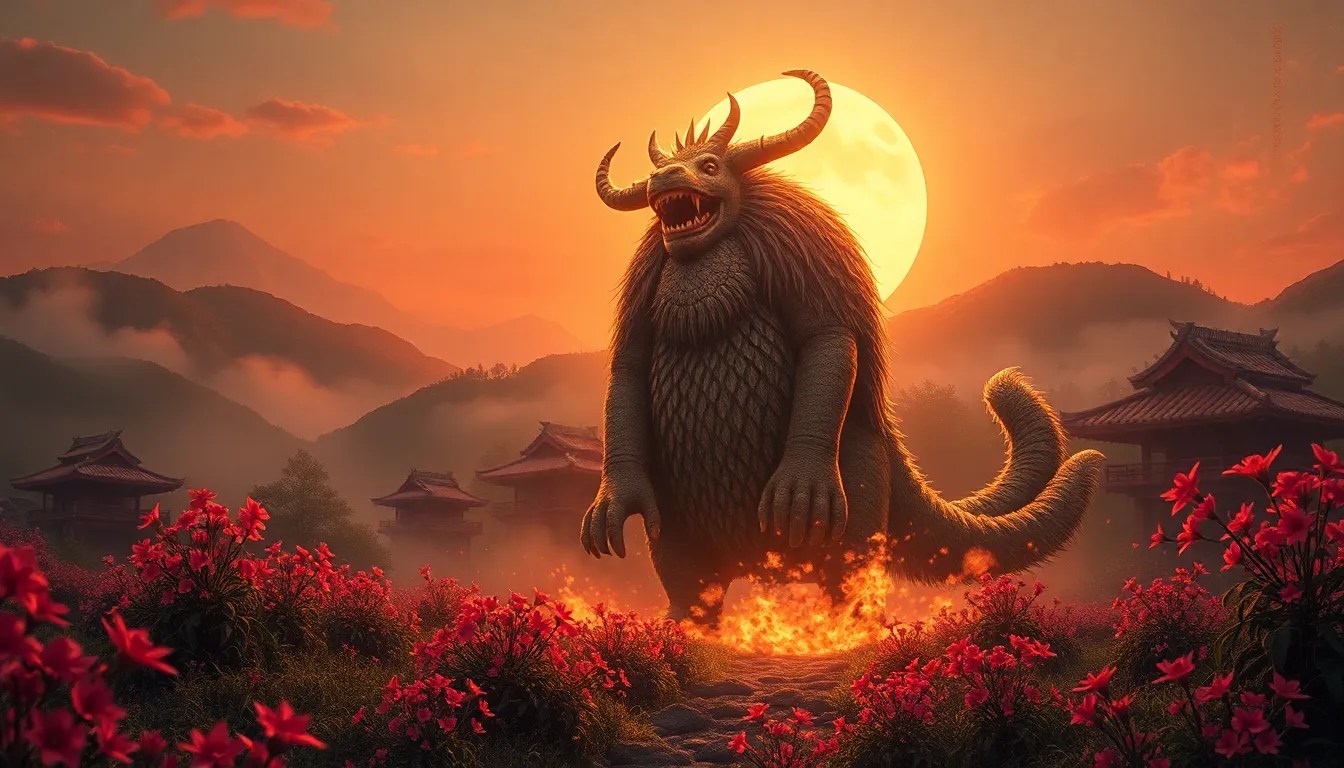The Enigmatic Yama-uba: A Mythical Figure in Japanese Agriculture
1. Introduction to Yama-uba
Yama-uba, often referred to as the “mountain witch,” is a legendary figure deeply entrenched in Japanese folklore. This enigmatic character is not just a simple myth; she embodies the relationship between humans and nature, particularly in the context of agriculture. Yama-uba is revered as a guardian of the mountains and a nurturing spirit, making her significant in the rural landscapes of Japan.
2. The Origins of Yama-uba
The origins of Yama-uba can be traced back to ancient Japanese texts and oral traditions. Historical records suggest that she has been acknowledged since at least the Heian period (794-1185). Over the centuries, she has been associated with mountain spirits and nature deities, reflecting the animistic beliefs prevalent in early Japanese culture.
Yama-uba’s character is believed to be derived from various local legends, with her image evolving as she became intertwined with agricultural practices and the reverence for nature. The connection to mountains signifies her role as a figure who embodies both the nurturing and threatening aspects of nature.
3. Yama-uba’s Role in Agricultural Practices
Yama-uba is often depicted in various farming rituals, where she is invoked for blessings on crops and harvests. Farmers would pay homage to her, seeking her favor to ensure fertile lands and bountiful yields. Key aspects of her role in agricultural practices include:
- Farming Rituals: Rituals dedicated to Yama-uba included offerings of rice, sake, and other agricultural products, symbolizing gratitude and respect.
- Harvest Celebrations: Festivals celebrating the harvest often featured Yama-uba as a central figure, reinforcing her importance in the agricultural calendar.
Through these practices, Yama-uba became a symbol of fertility and abundance, embodying the deep connection between the earth and the people who tended it.
4. Symbolism and Attributes of Yama-uba
Yama-uba is characterized by her distinctive physical attributes and rich symbolism. Often depicted as an elderly woman with wild hair and a tattered kimono, her appearance reflects both the wisdom of age and the unpredictability of nature. Key symbolic attributes include:
- Nurturing Mother: Yama-uba is seen as a caregiver, providing sustenance and guidance to those who respect her.
- Fearsome Witch: Conversely, she is also feared for her potential to harm those who disrespect the land or her spirit.
This duality in her persona represents the complexities of nature — nurturing yet dangerous, life-giving yet capable of destruction.
5. Yama-uba in Folktales and Legends
Yama-uba features prominently in various folktales and legends throughout Japan. One of the most famous stories involves her interaction with the legendary hero Kintaro, whom she raises as her own child. These tales often highlight themes of maternal love, nature’s power, and the moral lessons of respecting the natural world.
Variations of Yama-uba’s story can be found across different regions in Japan, showcasing local interpretations and cultural influences. Each version contributes to a rich tapestry of folklore that continues to captivate audiences today.
6. Yama-uba’s Influence on Japanese Culture
Yama-uba’s influence extends beyond folklore into various aspects of Japanese culture, including art, literature, and performance. She has been portrayed in:
- Art: Traditional paintings and woodblock prints often depict her in serene mountain settings, illustrating her connection to nature.
- Literature: Authors have drawn inspiration from her character, exploring themes of motherhood, nature, and the supernatural.
- Performance: Yama-uba has been a character in Noh and Kabuki theatre, where her stories are dramatized, bringing her legend to life for contemporary audiences.
In modern media, Yama-uba appears in anime, manga, and video games, reflecting her enduring presence in Japanese popular culture.
7. Yama-uba and Shinto Practices
The connection between Yama-uba and Shinto beliefs is notable. As a figure associated with the mountains, she embodies many of the principles of Shintoism, which emphasizes the veneration of nature and its spirits. Rituals and offerings dedicated to Yama-uba often occur at shrines located in mountainous regions, where she is honored as a deity of the earth.
Practices may include:
- Seasonal Festivals: Celebrations that coincide with planting or harvest seasons, where communities gather to pay tribute to Yama-uba.
- Offerings: Local farmers may leave offerings at her shrines, including rice and flowers, to seek her blessings.
These practices highlight the deep-rooted respect for Yama-uba as a vital force in the agricultural cycle.
8. Conclusion: The Legacy of Yama-uba in Modern Japan
The legacy of Yama-uba remains significant in modern Japan, reflecting her continuing relevance in agriculture, spirituality, and culture. As society evolves, the stories of Yama-uba serve as a reminder of the importance of respecting nature and the lessons learned from the past.
Preserving Yama-uba’s stories and rituals is essential for future generations, ensuring that the rich tapestry of Japanese folklore continues to inspire and educate. Her character is a testament to the enduring connection between people and the environment, embodying the complexities of life rooted in tradition and respect for the natural world.



